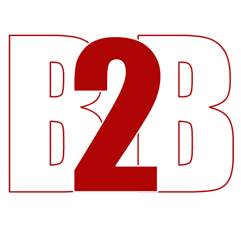
Have you recently introduced a new retirement plan at your company? Perhaps you’re new to the process and filing a Form 5500. How does it work? Do you need an audit?
We answer these questions and more below, giving you the complete breakdown of:
- Form 5500 Basics
- Form 5500 audit requirements
- Quick tips to ensure compliance
Read on to learn more about this important employee benefits requirement and avoid serious penalties.
Form 5500: The Basics
1. What is Form 5500?
The Form 5500 is an annual report filed with the Department of Labor (DOL). It was formed under the Employee Retirement Income Security Act (ERISA).
This report includes info about your retirement plan’s financial conditions, investments, and operations. It is how you show the DOL and Internal Revenue Services (IRS) that your plan is compliant with government regulations and meeting the terms included in the plan.
Generally, all retirement plans, like profit-sharing and 401(k) plans, must file a Form 5500 for every year the plan holds assets.
2. What is ERISA?
The ERISA is a federal law created in 1974 that sets minimum standards for most voluntarily established retirement and health plans in private organizations to protect plan participants. The law does this by:
- Requiring employers to provide participants with plan information, including important info about features and funding.
- Establishing fiduciary responsibilities for those who manage and control the plan assets.
- Requiring employers to establish a grievance and appeals process for participants to get benefits from their plans.
- Giving participants the right to sue for benefits and breaches of fiduciary duty
3. When must employee contributions be deposited?
Employers must deposit employee contributions into their accounts no later than the 15th business day of the month following the month in which the contributions occurred. In other words, March contributions must be deposited into participants’ accounts by April 15th.
Ideally, employers should make deposits as early as possible so they can segregate participant contributions from their general assets.
Organizations with 100 or fewer employees are considered small employers and subject to safe harbor deadlines. This allows them seven business days after collecting employee deferrals to deposit them into the plan.
4. What are the deadlines and extension options for filing the 5500?
For most plans, the Form 5500 is due on the last day of the seventh month after the plan year ends, typically July 31 for a calendar-year plan (or the next business day if July 31 falls on a weekend).
The plan administrator must electronically sign and file Form 5500 with the DOL. They must also keep a copy of the form, as well as the schedules and attachments, with all required signatures on file with the plan’s records.
You can file an extension if you are unable to complete your Form 5500 on time by submitting a Form 5558 to the IRS before July 31 to avoid late filing penalties. When filed correctly and on time, an extension is due two and a half months after your Form 5500 was due.
5. What is a summary annual report?
The Summary Annual Report (SAR) summarizes the information reported on Form 5500 and schedules. This document gives participants a summary of the plan’s financial status as reported on your Form 5500. Additionally, the SAR informs participants of their right to receive a copy of the completed Form 5500 if they request it from you.
ERISA requires this document to be distributed to each participant and their beneficiaries receiving benefits under the plan no later than two months following the filing deadline, normally September 15th. With the extension, a SAR is due December 15th.
6. How do I file my Form 5500?
The DOL now requires that all Form 5500 be filed electronically using either an EFAST2-approved third-party software or IFILE. The agency does not accept paper filings. You can register with EFAST2 today.
It is crucial that you file a complete return with all required information and responses. If you do not, your Form 5500 will be rejected and you may be hit with penalties or fines. Willful violations, such as making false statements, will incur extra penalties.
7. What are the penalties for noncompliance?
The government enforces stiff penalties for failing to file or noncompliance, which are adjusted annually for inflation.
The DOL provides a Delinquent Filer Voluntary Compliance Program (DFVCP), which encourages voluntary compliance with ERISA’s annual reporting requirements. The DFVCP gives delinquent plan administrators an option to meet the program’s requirements and voluntarily pay a reduced penalty, thereby avoiding even higher penalties.
8. Does my company’s retirement plan require a fidelity bond?
Yes, ERISA requires every plan administrator and anyone else who manages or has the authority to manage plan assets to be covered by a bond. Think of it as insurance for the plan and covers anyone who manages or has the authority to manage plan assets. A fidelity bond also protects the plan against loss in the case of fraud or dishonesty committed by one of the bonded individuals.
The required amount of bond coverage is the lesser of 10 percent of plan assets at the beginning of the plan year, or $500,000.
About Form 5500 Audits
9. What is a Form 5500 audit and when is it mandatory?
A Form 5500 audit is performed by an independent qualified public accountant (IQPA) for qualifying companies. The IQPA confirms that the plan is compliant with government regulations and that your Form 5500 is accurate.
Typically, retirement plans with 100 or more participants must include an audit report with the Form 5500 filling every year. This includes eligible but not participating employees AND separated employees with account balances. Employers often fill out their Form 5500 incorrectly because they don’t properly account for participants!
10. What are the Form 5500 requirements?
A Form 5500 audit ensures that the plan is operating in compliance with the IRS along with the plan agreement to ensure that employees receive what they are promised as participants of the plan. The IQPA also verifies that the audit statement reconciles with your Form 5500.
While the IQPA is not responsible for filing, they will identify any issues or inconsistencies between your plan and Form 5500 and make relevant recommendations.
During a Form 5500 audit, the IQPA will test:
- Employee eligibility to participate in the plan.
- Employee contributions to ensure they’re deposited timely and in accordance with plan documents.
- Distributions to ensure they’re in compliance with plan docs and the IRS.
- Employer contributions to verify if they are 1) required and 2) provided according to the plan.
Quick Tips for Ensuring Compliance
We get it—the Form 5500 can be a bit overwhelming and the thought of those penalties probably gives you a sinking feeling. Keep calm, take a deep breath, and use our quick checklist below to avoid some common filing mistakes many employers make.
- Identify an appropriate plan administrator.
- Fill out the correct number of plan participants.
- Do not allow employee contributions to exceed the annual limit (set by the IRS).
- If your company has not experienced fraud, leave the question about a loss caused by fraud or dishonesty blank. (Many employers answer this question incorrectly.)
- Do not use code 1l, which indicates a frozen or inactive plan.
- Double-check your EIN and plan number to ensure they are correct.
- Avoid providing too much information, such as returns dated over 12 months.
- Only file your form with EFAST software or IFILE.
The DOL also provides a number of Form 5500 resources to educate companies on the requirements and how to properly file.
Do you prefer more hands-on guidance? Contact BlueLion to learn more about our human resources consulting services. We’ll be happy to help you navigate the filing and remain compliant. We can answer your questions and confirm whether or not a Form 5500 audit is required for your business. Call 603-818-4131 or email [email protected]!
- 18 views


